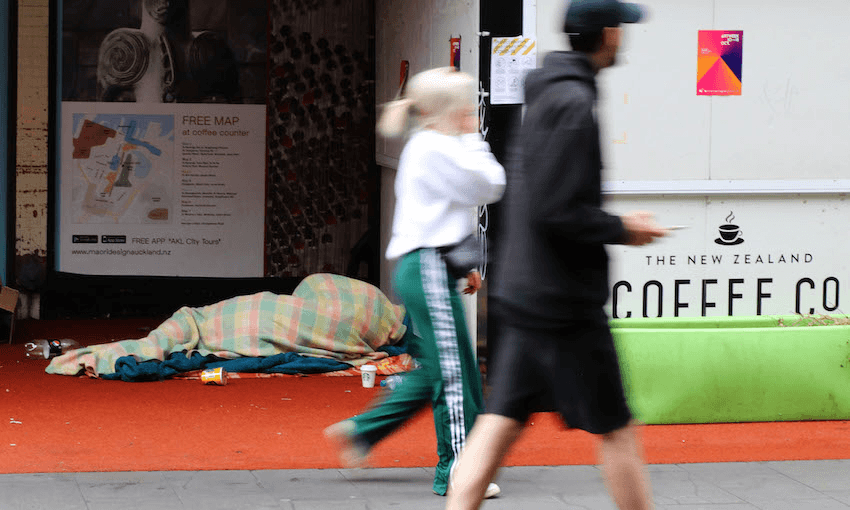The annual Salvation Army state of the nation report shows that for many people already doing it tough, life got much harder in 2020. Alex Braae reports.
Thousands of new people approached the Salvation Army for assistance over 2020, and Ronji Tanielu is worried about them becoming regulars.
Tanielu is a lawyer, and a principal advisor at the Salvation Army. He co-authored the Salvation Army’s annual state of the nation report, which was released this morning, with Paul Barber and Ana Ika. The report paints a picture of a country in the grip of a K-shaped recovery – where those with more are going up, and those with less are going in the opposite direction.
The Salvation Army sees about 120,000 people a year, often the most marginalised and vulnerable New Zealanders. Their lives have got harder as a result of Covid-19.
“To be honest, Covid, if anything, made the cracks in their lives get worse. So they came into the Covid situation with cracks – addiction, housing, budgeting, child poverty. Covid magnified those cracks,” said Tanielu.
The number the organisation often focuses on to get a picture of need is how many food parcels go out. More than 113,000 were distributed over the course of 2020. It is a “disgrace for our nation” to have so much poverty, said Tanielu.
That number is almost double what was distributed in 2019, and a lot of that need came from new people turning up. An estimated 10,000 new clients used Salvation Army services over 2020, primarily coming from food bank referrals.
“They were probably donating to food banks in 2019, and because of Covid, the hardship and job losses, their dominoes started falling. And they ended up receiving a food parcel in 2020,” said Tanielu.
“That’s what Covid has revealed. There was an existing group of people in hardship who really needed help. But there’s a changing face of hardship that New Zealanders really need to be worried about.
“Because if they tip over into our normal clientele, who already have numerous complex issues, we’re on a hiding to nothing, to be honest, because we’re just going to continue to be stretched.”
The overall state of the country presented in the report is bleak, focusing in on those who are living in the worst economic deprivation and social hardship. It often manifests itself in poorer quality housing, worse health outcomes, and greater rates of addiction.
Child poverty in particular, and inequality in general, has been a persistent thorn in the side of the current government, which took office promising to start turning it around. The 2018 Welfare Expert Advisory Group report has become a case in point – in the years since, only a small number of the recommendations have been implemented.
The social housing waitlist register has now ballooned to more than 22,000 applicants, with some of those people being single, and others having children and dependents. Tanielu said there are personal stories behind every single one of those numbers.
“I remember working with a solo mother with several children, who was living in a motel situation that was extremely unsafe. That’s not an uncommon situation for people on the register.”
“I remember working with some guys who had just been released from prison. No family would take them in, there was no safe place for them to be housed. And so they ended up in a really risky boarding house situation, until we transitioned them into our transitional housing.”
Boarding houses in particular concern Tanielu, because of the lack of support for the people living in them. He gave examples of people who were trying to recover from addictions having to live under the same roof as people selling methamphetamine.
People on the social housing register were often those who “nobody wants to house”, said Tanielu, which created situations where vulnerable people are placed with other vulnerable people.
There is also a big difference between transitional housing and emergency housing. Transitional housing tends to involve more support, while emergency housing can be much more sparse and isolating.
“There’s about 3,000 transitional housing places around the country, and these are 12-week stays. The Salvation Army works with about 1,000 of them. Over half of our transitional housing clients are Māori. They’re meant to stay 12 weeks, but they end up staying much more because we just can’t transition them out to anywhere safe.”
The report showed that Māori and Pasifika continue to bear the brunt of poverty at disproportionate rates to the rest of the country. But Tanielu said it shouldn’t be seen as an issue for only a few communities.
“Poverty isn’t just a Māori and Pasifika issue, it’s a national issue. And that’s why we call it a national disgrace.”
